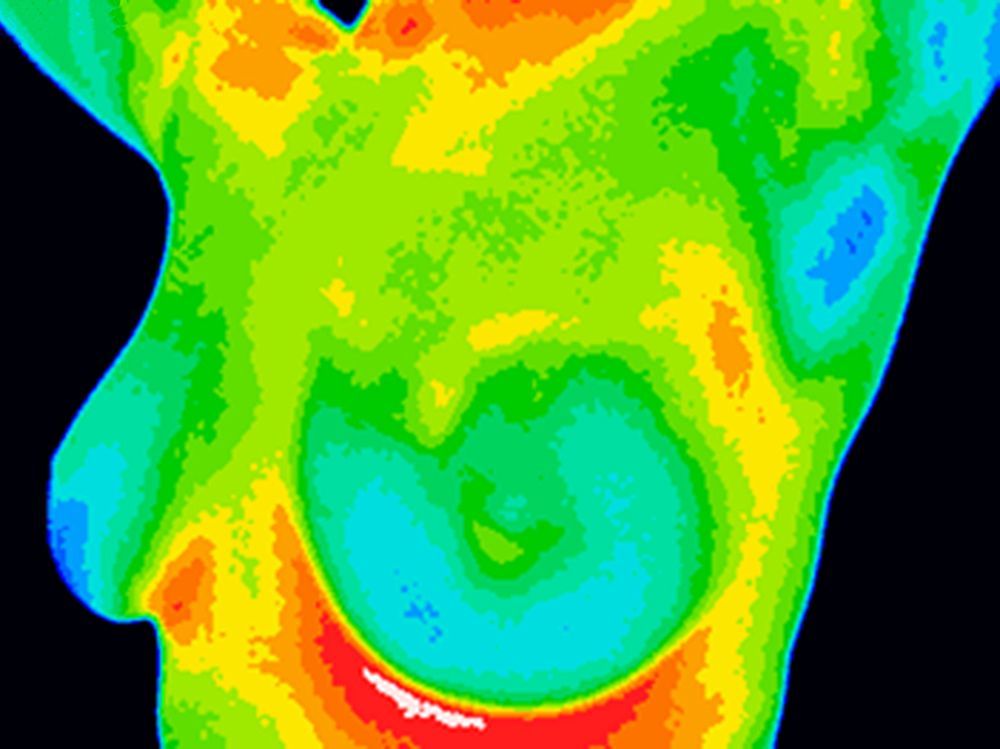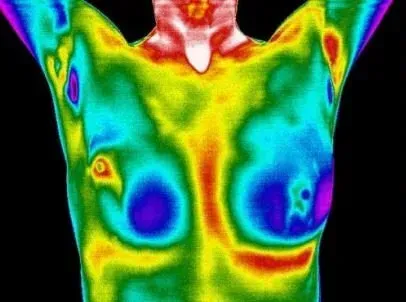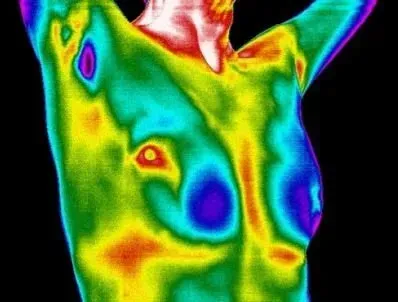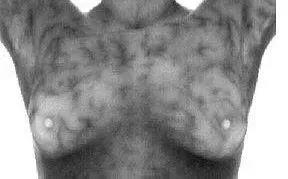Breast Thermography Conditions & Case Studies
What We Can Assess
Conditions Breast Thermography Helps Monitor
Breast thermography provides a non-invasive way to evaluate physiological patterns that may support early awareness and ongoing monitoring of breast health. It can be used as part of a broader approach to understanding:
- Breast cancer
- Dense breast tissue
- Fibrocystic breast condition
- Inflammatory breast cancer (IBC)

Breast Cancer
Breast cancer affects 1 in 8 women in the U.S., including thousands under the age of 40, where if often grows faster and can be harder to detect. Thermography provides a unique perspective by measuring changes in breast physiology over time. Establishing a baseline allows for early awareness of unusual patterns, supporting informed conversations with your healthcare provider.
Case Highlights:
A client with a 2.4 cm retroareolar tumor was diagnosed following her thermography screening, after multiple mammograms failed to detect it. According to cancer.gov, mammography can miss up to 20% of tumors, especially in younger women or those with dense breasts.

Dense Breast Tissue
Nearly half of all women have dense breast tissue, which simply means there is more glandular and connective tissue than fat. This is a normal variation, buy can make certain imaging tests harder to interpret, which may result in:
- Additional follow-up imaging
- More monitoring over time
- Difficulty determining whether areas need further evaluation
Because of these recurring uncertainties, many women with dense breasts seek additional ways to monitor their breast health.
How Thermography Helps
Thermography doesn't rely on structure or density. Instead it measures thermal and vascular patterns on the body's surface, reflecting physiological changes in the breast that may not be visible on other imaging. For women with dense breasts, thermography offers:
- Insight unaffected by tissue density
- A personalized baseline to monitor changes over time
- Supportive information when combined with other screenings or clinical evaluations
- A comfortable, non-compressive, radiation-free experience


Client Example:
A client with dense breasts had repeated mammography imaging over the years with inconclusive results. Her thermography screening highlighted an area that warranted further evaluation, ultimately leading to a diagnosis..
Fibrocystic Breast Condition
Fibrocystic changes are common, affecting more than half women at some point. This benign condition is often related to hormonal fluctuations and may include:
- Cyclic tenderness
- Mobile, fluid-filled lumps
- Increased breast sensitivity before mensuration


Thermography can help visualize the physiological patterns associated with hormonal influence, such as increased vascular activity or mottling related to estrogen dominance.
Inflammatory Breast Cancer (IDC)
IBC is rare but aggressive from of breast cancer that often does not present as a lump, making early recognition of symptoms important.
Possible Signs of IBC include:
- Sudden enlargement of one breast
- Pink, red or bruised appearance
- Increased warmth
- Skin dimpling or texture changes
- Nipple inversion
- Tenderness or discomfort
- Enlarged lymph nodes near the breast or collarbone




Ready to Schedule?
Be Proactive About Your Breast Health
Understanding your breast physiology is an empowering step toward early awareness and prevention. Whether you have dense breasts, a history of breast conditions, or simply want a more comprehensive view of your wellness, thermography offers a comfortable and informative path forward. With expert interpretation, a supportive environment, and flexible scheduling, CT Thermography is here to help you make confident, informed decisions about your breast health.



